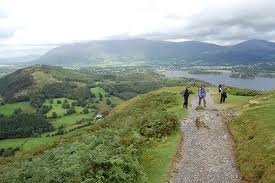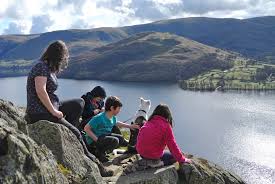CUMBRIA, UK — As the summer sun graces the United Kingdom, millions of Britons and international visitors alike are heading north to discover one of England’s most captivating natural wonders — the Lake District National Park. Located in the heart of Cumbria, this UNESCO World Heritage Site has become a go-to summer destination offering a rare blend of tranquility, adventure, and cultural richness.
Known for its vast network of lakes, rolling green hills, and storybook villages, the Lake District is widely regarded as one of the most beautiful regions in the UK. But during the summer months, it becomes even more appealing — with warm weather, extended daylight, and a vibrant calendar of events drawing in visitors from around the world.
A Seasonal Haven for Nature and Adventure
From mid-June to early September, the Lake District offers ideal conditions for outdoor enthusiasts. With temperatures hovering between 18–22°C, the area provides perfect weather for long hikes, lakeside picnics, and water-based recreation.
The region’s crown jewel, Lake Windermere, is the largest lake in England and serves as the centerpiece for boating, paddleboarding, and scenic cruises. Meanwhile, adventure-seekers are often drawn to Scafell Pike, the highest mountain in England, which offers panoramic views of the entire park from its summit.
For those preferring gentler pastimes, the district’s many walking and cycling trails meander through picturesque valleys, flower-filled meadows, and charming villages like Grasmere and Ambleside.
Cultural Roots and Literary Legacy
Beyond its natural beauty, the Lake District holds significant cultural and literary importance. The romantic poet William Wordsworth spent much of his life in Grasmere, and his former home, Dove Cottage, remains a popular attraction. Nearby, the house of beloved children’s author Beatrix Potter is also open to visitors, showcasing original illustrations and the very furniture she used while crafting her timeless tales.

Food, Hospitality, and Local Charm
The Lake District also delights visitors with its Cumbrian culinary offerings. Traditional dishes such as Cumberland sausage, Herdwick lamb, and sticky toffee pudding can be found across the region — served fresh in cozy inns, farm cafés, and fine-dining establishments.
Farm shops, craft bakeries, and tea rooms are dotted throughout the area, often providing local cheese, chutneys, and handmade treats, all sourced from the surrounding farmland.
Accommodation options range from traditional stone-built guesthouses and boutique hotels to luxury spa retreats overlooking the lakes. Many offer panoramic views and provide the perfect base for exploring nearby trails or unwinding after a day outdoors.
How to Get There
Travel to the Lake District is relatively easy. Visitors arriving by train can reach the region via Oxenholme Lake District station, with direct services from London, Manchester, and Glasgow. By car, it is well-connected via the M6 motorway, while national and local bus services provide budget-friendly travel for those without private transport.
A Timeless Escape 
In a country known for its scenic diversity, the Lake District stands apart — not just as a place of natural splendor, but as a living landscape filled with stories, traditions, and unforgettable experiences.
As staycations and eco-tourism continue to rise in popularity, experts say the Lake District is poised to see a record number of visitors this summer — a sign that its appeal is as enduring as its timeless hills and shimmering waters.
Whether for a day trip or a week-long retreat, the Lake District offers a reminder that England’s most magical destinations may not lie across oceans, but just a few hours north of the cities.


